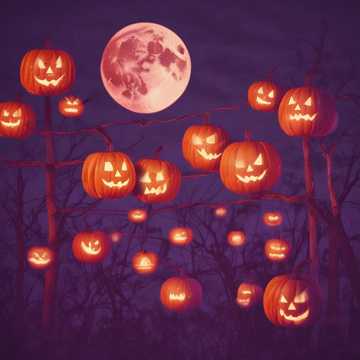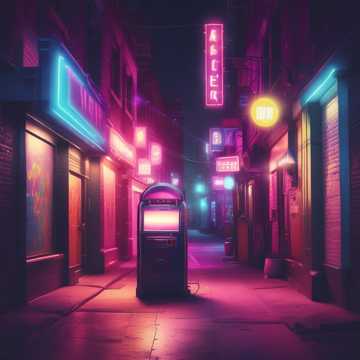
Free Walking Bass Music Generator Powered by AI
Turn text into high-quality Walking Bass music effortlessly – no login required!
music.toolTips

Pumpkin Patch Boogie
A lively, spooky instrumental filled with jazzy basslines and vibraphone sparkles, capturing the mischievous charm of Halloween night.
01:05
1 days ago

Whiskey on the River
A sensual New Orleans blues instrumental, 'Whiskey on the River' flows with smoky brass, sultry piano, and a walking bass line evoking deep southern nights and quiet, soulful contemplation.
02:47
2 days ago

Hannes Tag
Ein fröhliches Geburtstagslied über Hannes, Kunst, Familie und Freiheit in der Natur, begleitet von liebevollen Wünschen und gemeinsamer Fahrradtour.
02:30
Invalid date

Atmosphere-Guarantees
A soulful 1950s blues reflection that drifts through smoky bars and midnight streets, where heartbreak and desire blend under neon lights.
02:01
3 days ago

Snap to It
'Snap to It' captures a bright, jazzy morning full of rhythm and energy, blending playful brass, finger snaps, and cheerful vocals to celebrate life's spontaneous joy and musical spirit.
02:42
4 days ago

Givral, Mon Amour
A sweet, romantic tune celebrating the Givral café culture in Hanoi, blending French café jazz with nostalgic themes of love and memories, paired with smooth vocals and a jazzy vibe.
03:19
4 days ago

It's All Over Again
A soulful blues ballad about heartbreak and emotional loss, characterized by expressive male vocals, organ swells, and a slow groove. The song poignantly explores the cycle of pain and the difficulty of healing after a breakup.
03:04
4 days ago

The Factory's Got the Blues
An instrumental jazz piece with a lively, smoky speakeasy vibe, featuring playful piano, muted trumpet, and walking bass. It captures a whimsical, upbeat mood with a hint of chaos in its arrangement, offering a fresh AI-generated sound.
01:32
5 days ago

Untitled
This upbeat, instrumental jazz track features a walking bass and blues influences. With a smooth and vibrant arrangement, it showcases crystal-clear guitar melodies, creating a lively yet relaxed atmosphere.
01:42
Invalid date
Sub-tags and Classifications within the Walking Bass Tag
Jazz Walking Bass
Jazz Walking Bass is the most traditional and foundational form of walking bass lines. Common in swing, bebop, and hard bop,Walking Bass Overview this style emphasizes outlining chord tones on strong beats and using chromatic passing tones and enclosures to maintain smooth motion between chords. It is typically played on the upright acoustic bass.
Blues Walking Bass
Blues Walking Bass lines blend the chromaticism of jazz with the repetitive, riff-based structure of traditional blues. These lines often make use of dominant 7th arpeggios and repetitive motifs over 12-bar blues progressions, offering a groovy and accessible version of walking bass.
Rockabilly Walking Bass
Rockabilly Walking Bass emerged in the 1950s and is characterized by fast, energetic lines often played with slap bass techniques. The walking bass in rockabilly blends the rhythmic drive of country and the harmonic simplicity of early rock and roll.
Electric Walking Bass
This refers to walking bass lines played on electric bass guitars rather than upright basses. While rooted in traditional jazz walking styles, electric walking bass offers a brighter tone and more percussive articulation, commonly used in fusion, funk-jazz, and modern R&B.
Modal Walking Bass
In modal jazz, walking bass lines focus more on scale-based and modal patterns rather than chord changes. This style, popularized by players like Ron Carter and Paul Chambers in modal works, allows for more melodic and less harmonically restricted lines.
Famous Artists and Works Related to the Walking Bass Tag
Paul Chambers
Paul Chambers was a pivotal figure in the development of modern jazz walking bass. Known for his work with Miles Davis and John Coltrane, Chambers introduced melodic sophistication and rhythmic inventiveness into walking bass lines. His work on albums like 'Kind of Blue' showcases exemplary walking bass technique.
So What – Miles Davis (Bass by Paul Chambers)
The walking bass in 'So What' is iconic for its simplicity and elegance. Played by Paul Chambers, it uses modal techniques to create a spacious, floating feeling while maintaining forward motion. This track highlights how walking bass can work within a modal framework without traditional chord changes.
Ray Brown
Ray Brown, a long-time collaborator with Oscar Peterson, brought a rich tone and driving swing feel to his walking bass lines. His lines were noted for their clarity, groove, and musicality, making him one of the most respected bassists in jazz history.
Autumn Leaves – Cannonball Adderley (Bass by Sam Jones)
In this jazz standard, Sam Jones provides a walking bass line that drives the harmony and swing feel. The line makes strategic use of chord tones and approach notes to create seamless transitions, demonstrating classic bebop walking technique.
Ron Carter
Ron Carter pushed the boundaries of walking bass by blending traditional techniques with modal and modern jazz concepts. His sophisticated phrasing and voice-leading innovations redefined the walking bass in ensembles led by Miles Davis and others.
Moanin’ – Charles Mingus
Mingus’s walking bass lines in 'Moanin’' are deeply rhythmic, syncopated, and infused with gospel and blues flavor. His playing offers a more aggressive and expressive interpretation of walking bass, breaking away from strict quarter-note patterns at times for dramatic effect.
Willie Dixon
As a foundational figure in Chicago blues, Willie Dixon's walking bass lines defined the sound of electric blues. His work with Muddy Waters and Howlin’ Wolf laid the groundwork for blues-rock and inspired countless bassists.
Hoochie Coochie Man – Muddy Waters (Bass by Willie Dixon)
Willie Dixon's bass line in 'Hoochie Coochie Man' exemplifies the blues walking bass style. The repetitive yet groovy pattern underpins the song's swagger, combining rhythmic precision with a raw, earthy tone.
Charles Mingus
Mingus was not only a bassist but also a composer and bandleader. His walking bass lines were rhythmically adventurous and deeply rooted in blues, gospel, and modern classical influences, pushing the expressive potential of the bass.
Night Train – Oscar Peterson Trio (Bass by Ray Brown)
Ray Brown’s walking bass in 'Night Train' showcases perfect swing feel and balance. His line is smooth, rhythmically tight, and perfectly aligned with Peterson’s piano phrasing, offering a masterclass in supportive yet musical bass accompaniment.
Application Scenarios for Walking Bass in Music Production and Media
Walking bass is frequently used in film scores to evoke a classic or retro jazz atmosphere. It adds sophistication and rhythmic drive to scenes set in nightclubs, cityscapes, or vintage-era montages. Films like 'La La Land' and 'The Cotton Club' have featured walking bass lines to enhance mood and period authenticity.
Jazz Film Soundtracks
In games with noir, detective, or jazzy settings, walking bass provides an immersive backdrop. Titles like 'L.A. Noire' and certain scenes in 'Cuphead' utilize walking bass to create a swinging, stylized ambiance that complements visual aesthetics.
Video Game Background Music
Walking bass is employed in commercials to evoke feelings of sophistication, nostalgia, or fun. Brands targeting vintage charm or upscale vibes may use walking bass lines under voiceovers or product showcases, especially in food, fashion, or lifestyle products.
Advertising and Commercials
Walking bass is a staple in music theory and instrumental education. It is used in tutorials, jazz practice play-alongs, and instructional videos to teach students about harmony, rhythm, and improvisation fundamentals.
Educational Music Content
Walking bass lines are essential in live jazz contexts, serving as the glue that holds improvisational ensembles together. Whether in clubs, festivals, or music schools, walking bass provides the foundation upon which soloists and rhythm sections build their dynamic interplay.
Live Jazz Performances and Jam Sessions